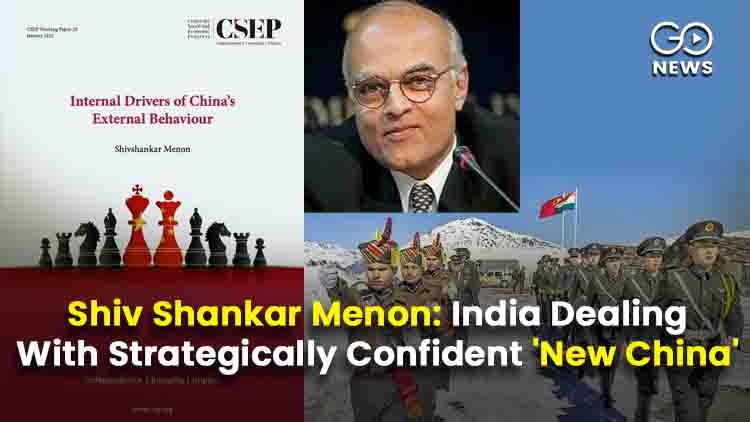Special: China Considers LAC As Dispute Over Sovereignty, Not Border: Shiv Shankar Menon, Ex-NSA

In a rare insight into the mind of President Xi and China’s other decision makers, former National Security Adviser and Foreign Secretary, Shiv Shankar Menon has penned a working paper titled ‘Internal Drivers of China’s External Behaviour’ which says that the government in Delhi is dealing with a New China full of confidence and new strategies.
The paper, published by the Centre for Social and Economic Progress delves deep into the historic, cultural, economic and strategic reasons for China’s external behaviour and how it is guided by its internal status today.
We publish some excerpts from the insightful academic exercise which can deepen understanding about India’s powerful neighbour.
The full paper can be accessed here
A New Confidence:
“For the first time in centuries, China is comfortable enough on land to consolidate the Eurasian Heartland. She can now turn her attention to imposing her power on the seas surrounding the Eurasian littoral. Her long preoccupation through history was with defending a geographically open inner Asian frontier against the nomadic northern and north-western steppe belt which spawned several dynasties that ruled China, like the Mongols/Yuan, Manchu/Qing, Jin, Liao and Tang. That is now changed.
China’s task in building a continental order has been eased by the division of Turan into smaller and weaker states where her economic power can be exercised, and by the retreat and diminution of Russia after the collapse of the Soviet Union. For the most part, Chinese power has been pushing at an open door on land, with the exception of South Asia, where India too is rising and expanding her definition of her interests, and in Korea, where partition of the peninsula and a US military presence limit China’s ability to shape outcomes. Overall, China is in a more comfortable geopolitical position on land than she has been since the high Qing conquest of the Dzungars at the end of the eighteenth century."
A New Strategy:
"China is betting on a model of innovation that is different from that which has succeeded so spectacularly in the West, relying not so much on rule of law as on very high incentives and rewards for successful innovation."
An Old Adversary: India
“In the case of the India-China border crisis since 2020, China’s actions of changing the situation on the ground, shifting the LAC, and preventing Indian patrols on territory hitherto controlled by India were a fundamental and consequential shift in behaviour- a successful salami-slicing manoeuvre. Because the initial response was non-strategic, India was forced to cede ground, and now faces a fait accompli.
By occupying territory on the Indian side, China put the onus of escalation on India if it wishes to restore the status quo. India considerably increased her deployment along the LAC in response to the Chinese military moves. In a partial response on August 29-30, 2020 India occupied some heights south of Pangong Tso on its own side of the line. This led to a subsequent disengagement in the Pangong Tso area. The government of India, for good reasons, seems unwilling to risk the wider war entailed by either vertical escalation (mounting major operations to evict the PLA) or horizontal escalation (to other sectors or to the maritime domain, for instance).
This has resulted in the prospect of around 100,00 troops from both sides spending another brutal winter confronting each other along the LAC. The decision to change the status quo on the India-China border in 2020 has to have been a decision taken at the highest level in China for larger strategic reasons, not just tactical military convenience.
Since the immediate trigger for the crisis was a change in Chinese behaviour, it seems logical to look for explanations in China itself, and in its perception of the outside world. One way in which China’s domestic considerations have worked to complicate the settlement of the India-China border crisis has already been mentioned. Unlike past confrontations and face-offs, the framing of the crisis by China as a sovereignty dispute — rather than as a border dispute which would be solved by give and take — makes it harder to settle.
It also suggests that for China the issue is not just about the LAC or its clarification but is part of an attempt to exercise control up to its claimed boundary, and also serves larger political goals. The other issue is the role of the PLA in the decision to heighten India-China border tensions and undertake escalating attempts to change the status quo since 2013. Ultimately, this is a question that needs further study and material that is unlikely to be available in the public domain.”
Latest Videos
















